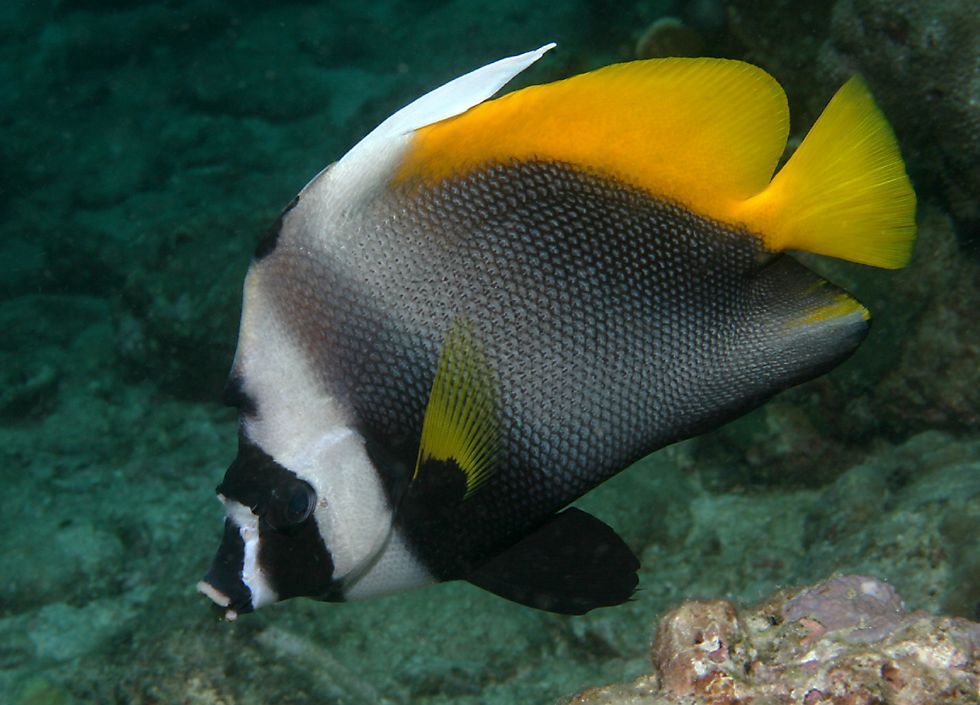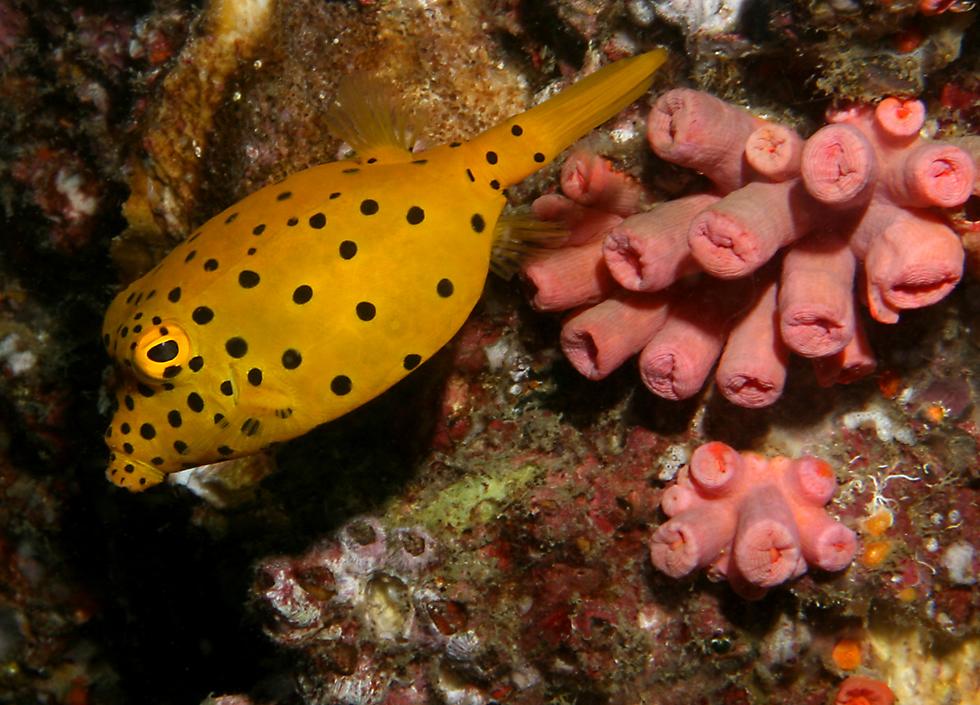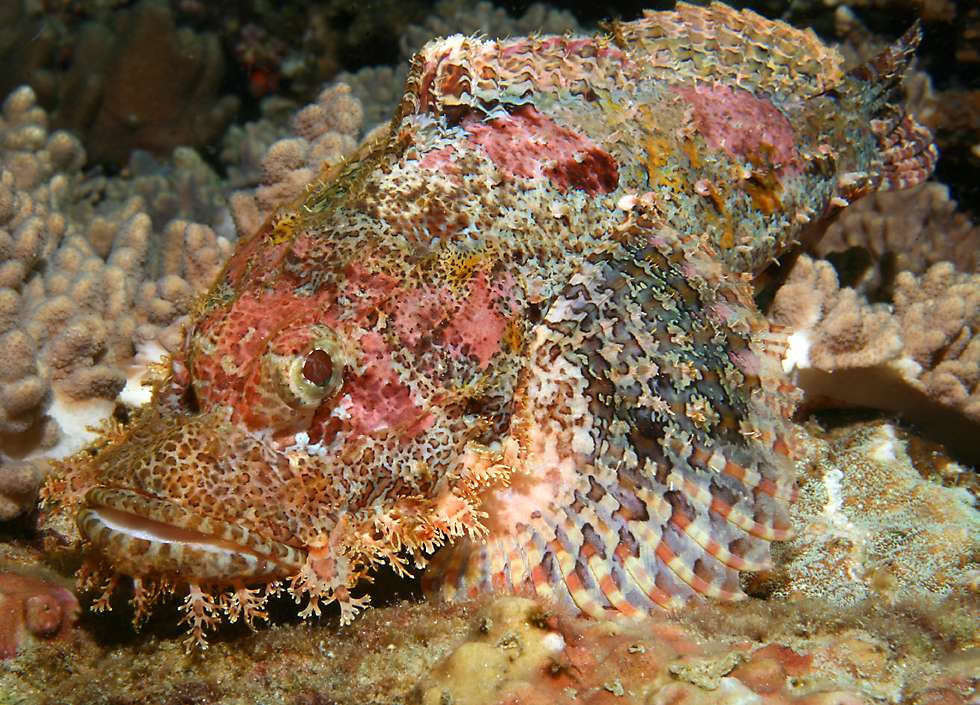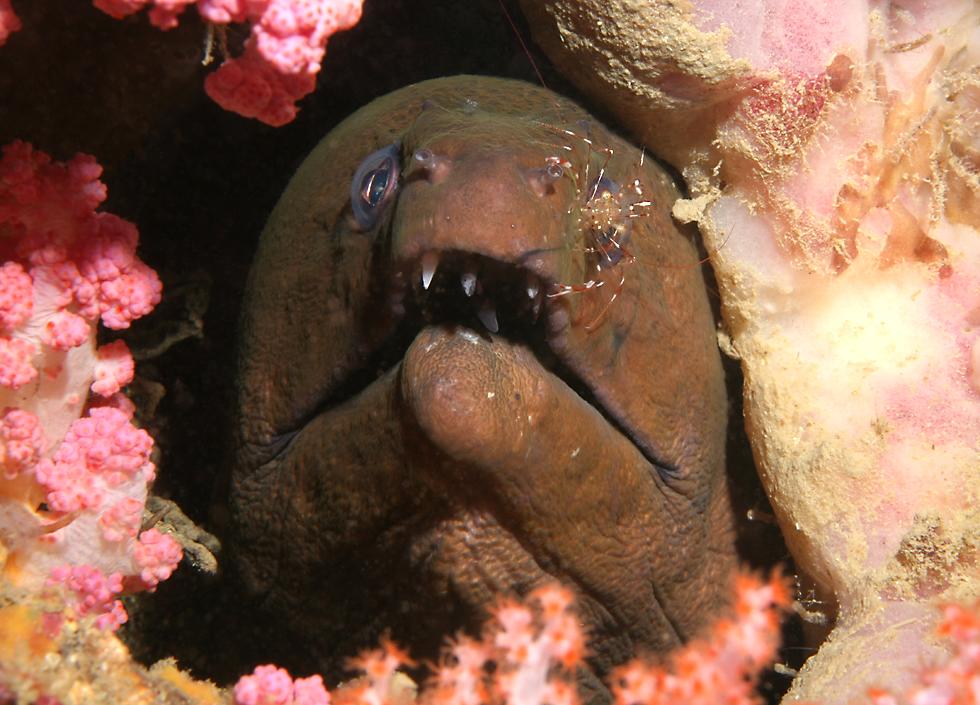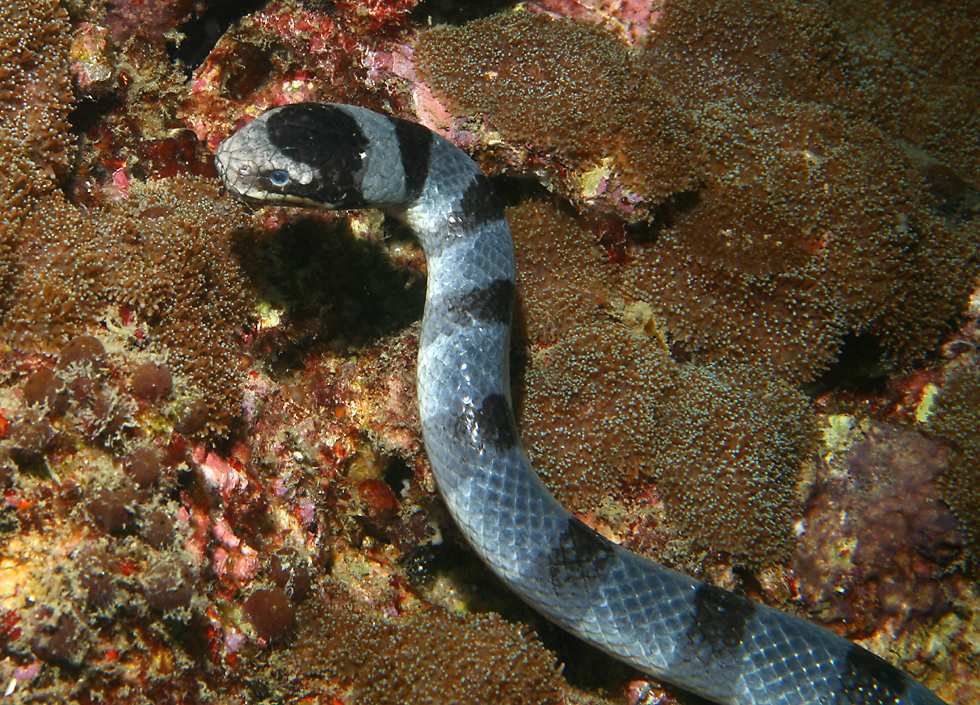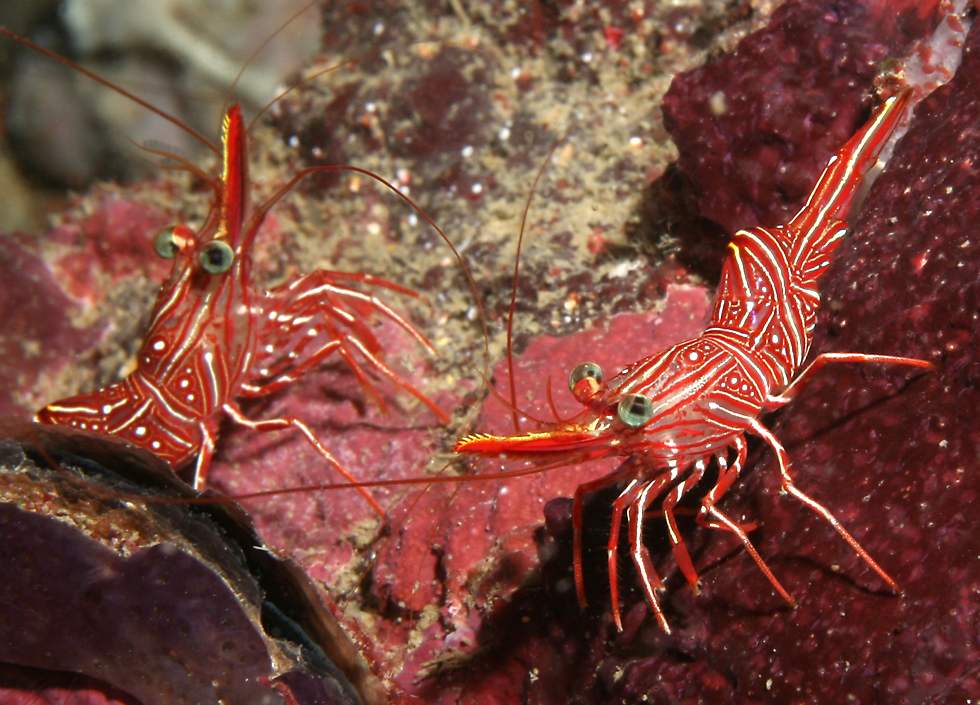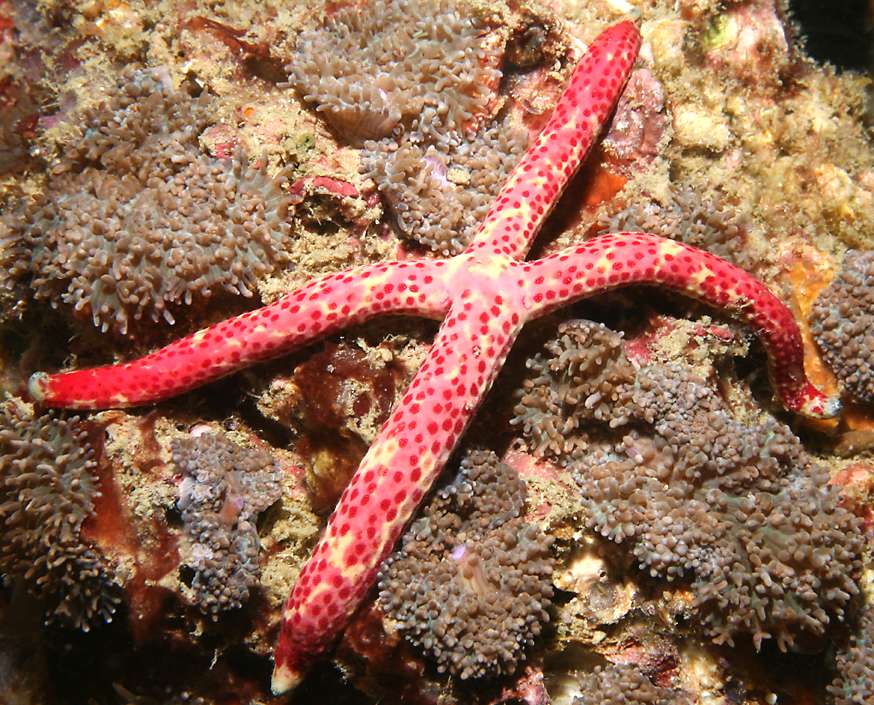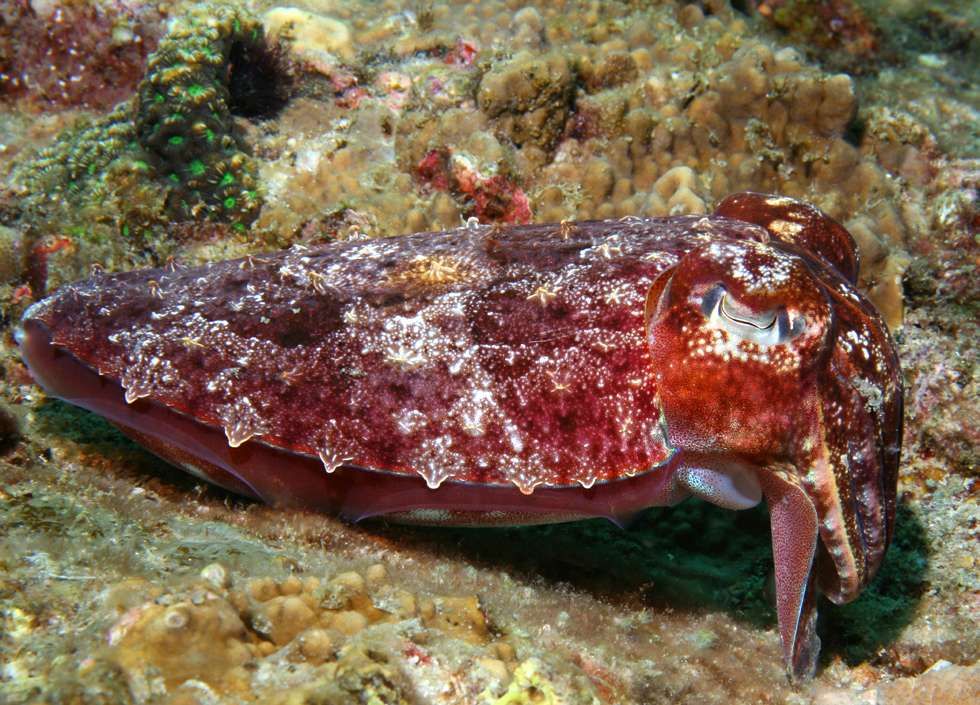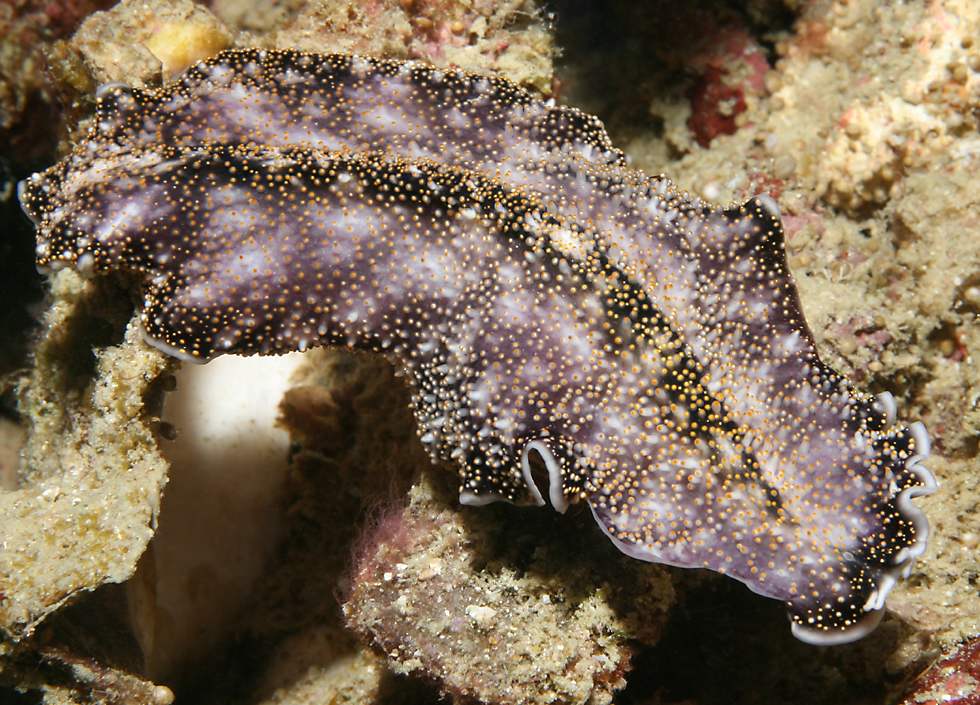Underwater Highlights of Thailand

Without doubt, Thailand is one of the world's great travel destinations. As well as an interesting culture, Thailand has friendly people, fascinating ancient architecture and plenty of opportunities to view the local wildlife in the many national parks scattered around the country. In addition to all these attractions, Thailand also draws divers from around the world to sample the underwater delights of the country, like this beautiful white-collar butterflyfish, a member of a large family of engagingly colored and patterned fish which is scattered through the world's warmer seas. |
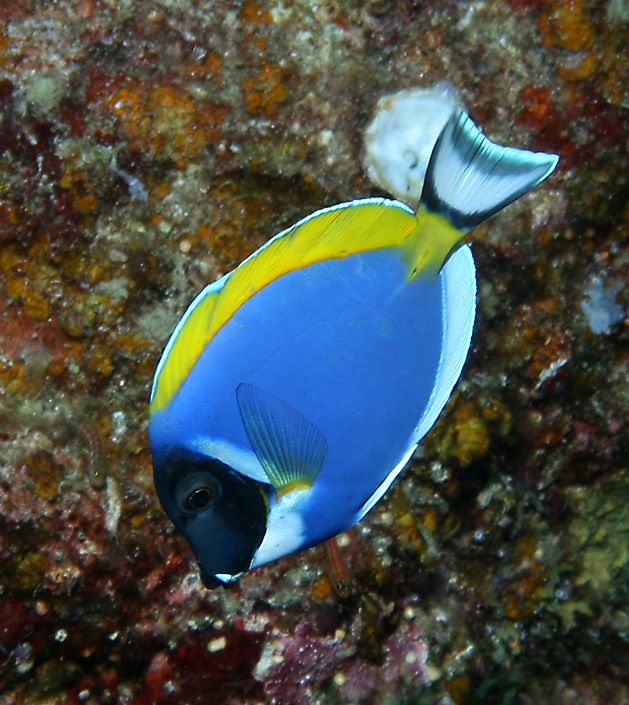
This powder blue surgeonfish is another new species for me, unfortunately I didn't get as close as I wanted, so I guess the "definitive" photo of a powder blue surgeonfish is still in my future. Surgeonfishes get their name from the sharp blade which usually lies recessed just before their tail, which you can see here as a slightly darker horizontal mark at the base of the tail. They can extend this for use as a defensive weapon or as a means of guarding territory from rivals. Powder blue surgeonfishes are certainly territorial, and their rivals include not just members of their own species, but also other types of fish which might try to graze on the algae which the surgeonfish eats. They're so aggressive that they can't be kept in aquariums with other fish. |
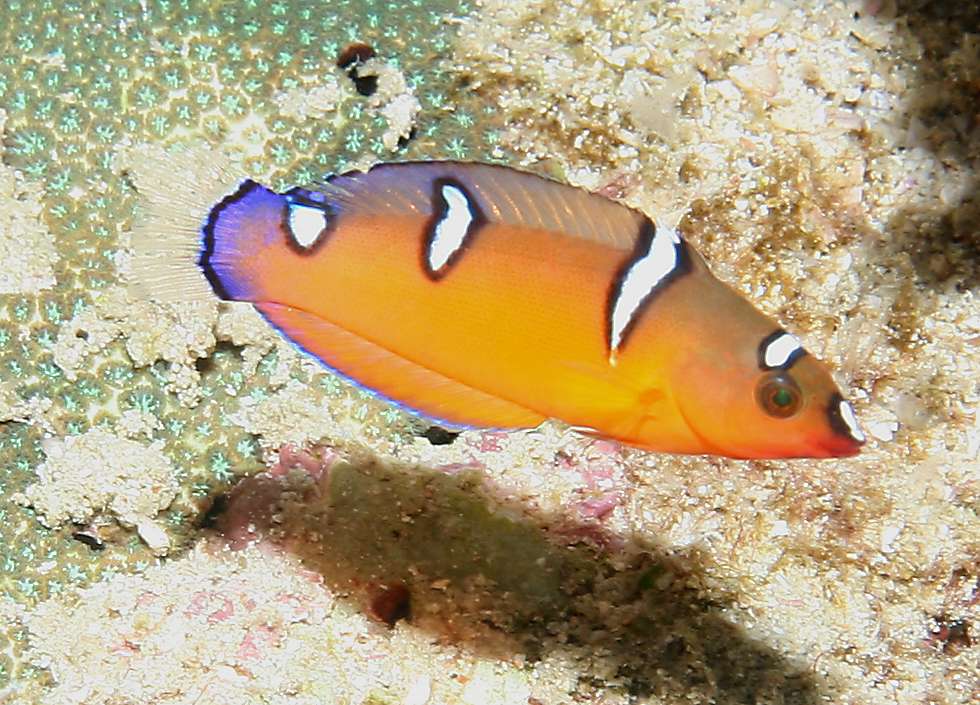
Here's another juvenile, this time a member of the wrasse family called the yellow-tail coris. This juvenile is obviously very attractive, but so too is the adult - you can see a photo of an adult yelllow-tail coris in the Philippines. As you can see, they're both very good looking, but it would be next to impossible to know that they were even the same fish, apart from the obvious wrasse shape! |
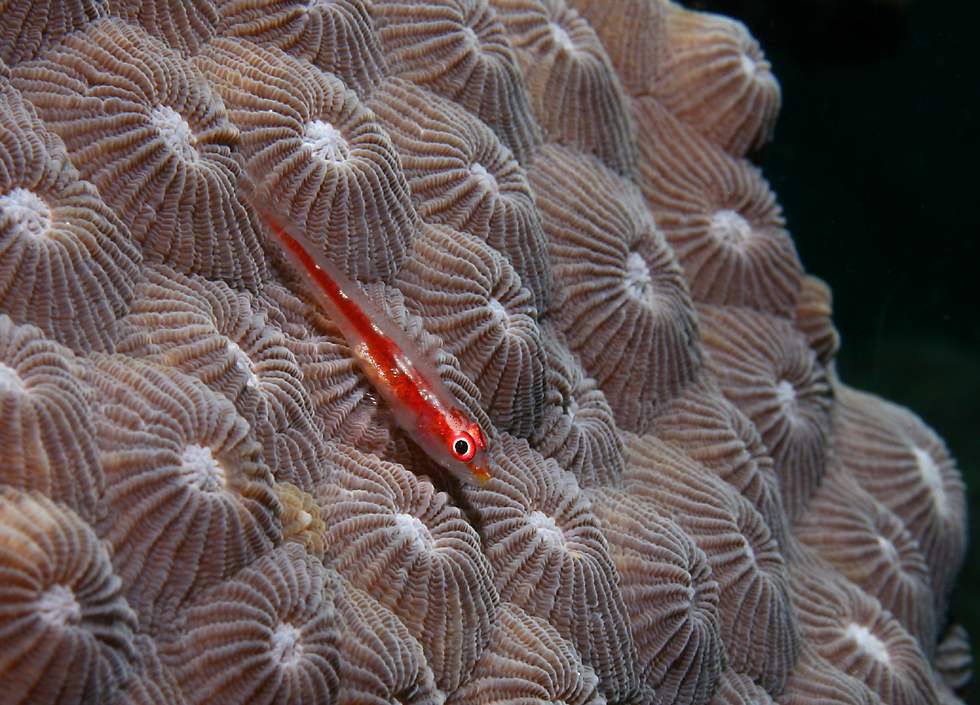
Gobies and blennies are mostly very small fish, blennies having a single long dorsal fin instead of the two dorsal fins of the gobies - though the triplefin blennies ruin it all by also having two fins! It makes no real difference, because I can't tell if this fish perched on brown coral has one or two fins, because I can't tell if the translucent area at the top is part of its back or a fin. |
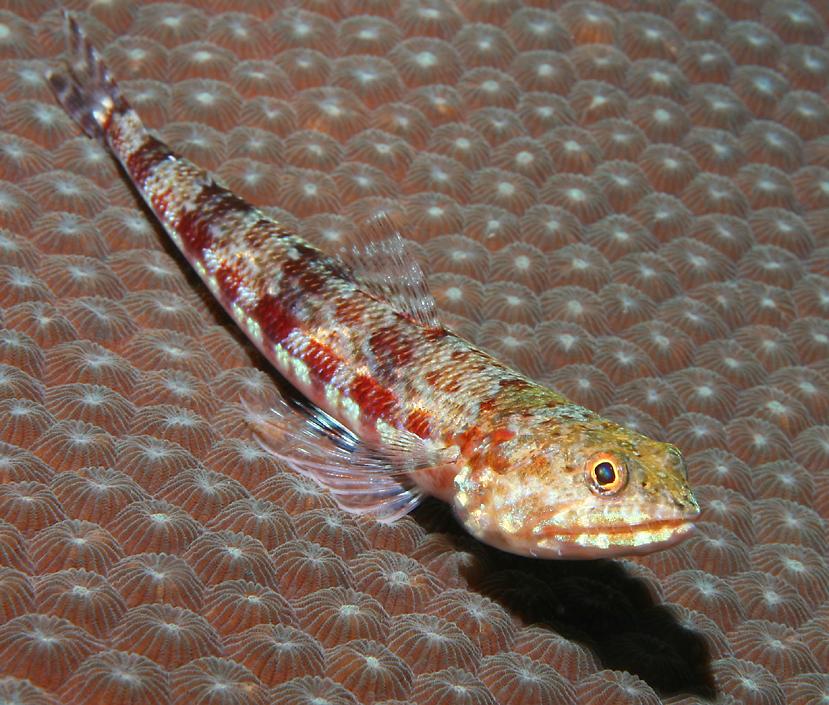
This is the same type of coral but another fish, a much larger and more menacing variety called a reef lizardfish. They're an aggressive predator, grabbing other small to medium size fish with those needle sharp teeth and then opening that huge mouth wide to swallow them whole. |

This fish looks rather morose, and so would you if you were called Bloch's Bigeye. They can change color fairly rapidly from completely red to silver with red on top, to this blotched phase, which could have earned the species the even more humiliating name Bloch's Blotched Bigeye! Those big eyes allow this family of fish to hunt smaller fish at night, which lets the bigeye have the last laugh after all. |
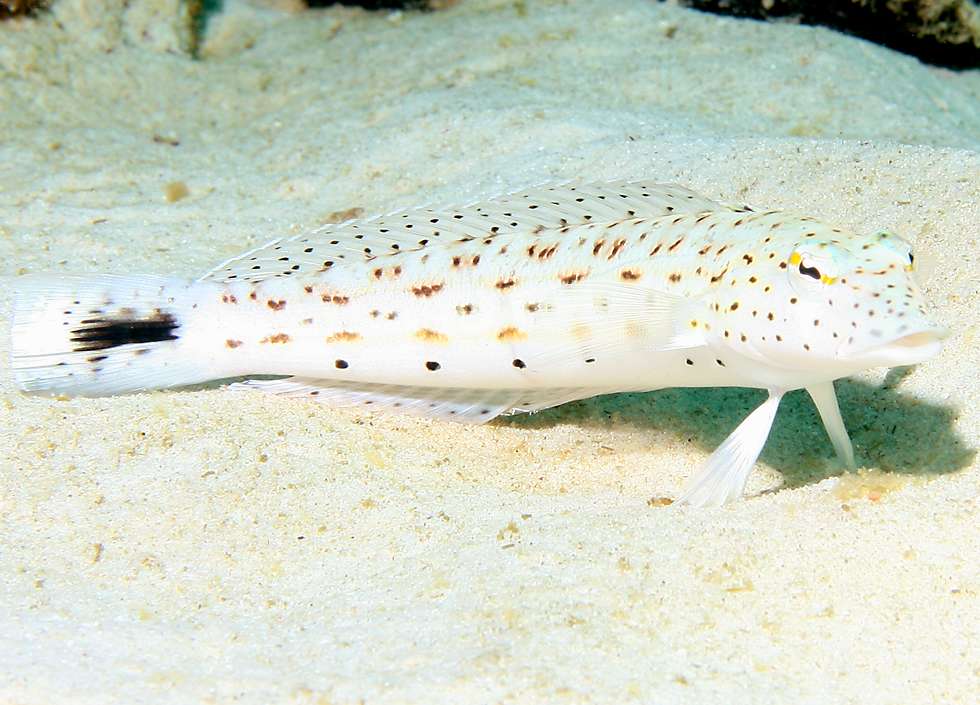
What are you lookin' at? As you might guess from its pose, this speckled sandperch is very territorial, perching on its two pectoral fins while it surveys its domain, a habit it shares with the other sixty or so members of this family. The speckled sandperch is probably the most commonly encountered member of the family, and it's also very widespread, all the way from South Africa to the Red Sea and across to Japan and the southern Great Barrier Reef in Australia. |
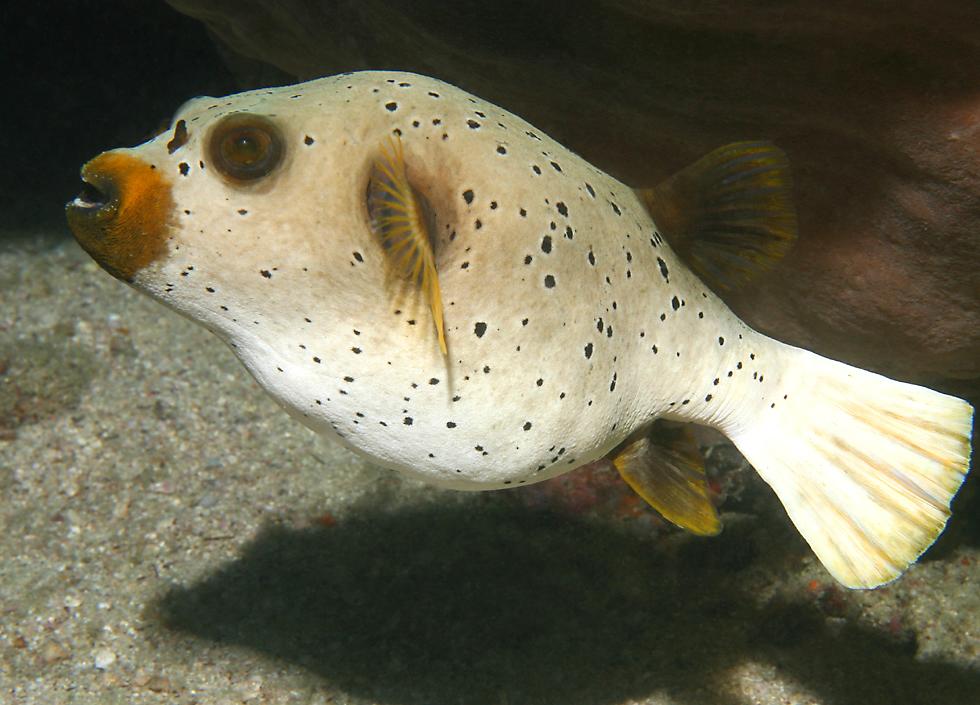
A black-spotted puffer drifts sluggishly around the reef. Instead of relying on speed, puffers protect themselves from predators by gulping down water and swelling themselves up to a size which hopefully makes them too much of a mouthful for the attacker. If that fails then it relies on a secondary defensive mechanism employed by many puffers, highly toxic flesh. It's better not to be bitten, but if that doesn't work then it's still better to have just one bite taken than many! This species comes in a wide variety of color schemes, some of which have very few black spots, however they can all be identified by the dark patch around the mouth. |

This black-blotched porcupinefish can pull all the tricks of a puffer, plus it has spines which stand erect when the porcupinefish is inflated, and it also has a reputation for inflicting nasty bites on any diver evil enough to provoke it for his or her own amusement! It's nocturnal, using that powerful bite to crush its preferred diet of crustaceans and shellfish. |
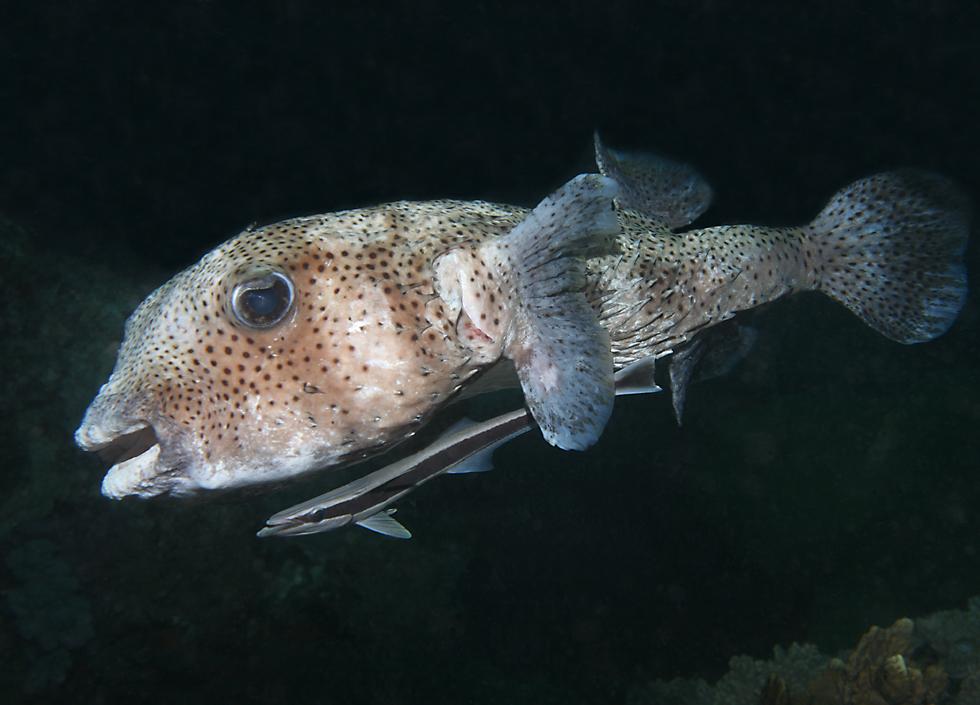
This spot-fin porcupinefish is much larger than the black-blotched porcupinefish, which probably helps it not be eaten but makes it prone to other nuisances, like the unwanted attention of this sharksucker which has decided to tag along for a ride. This species is circumtropical, which means that it's managed to establish itself in the tropical waters of both the Pacific and the Atlantic, which either involves surviving a trip through the cold waters at the bottom of South Africa, or being around long enough to have swum through the gap where Central America now is. Most scientists believe that it's the baby fishes, floating around with seaweed, which make the trip from one ocean to the other. |
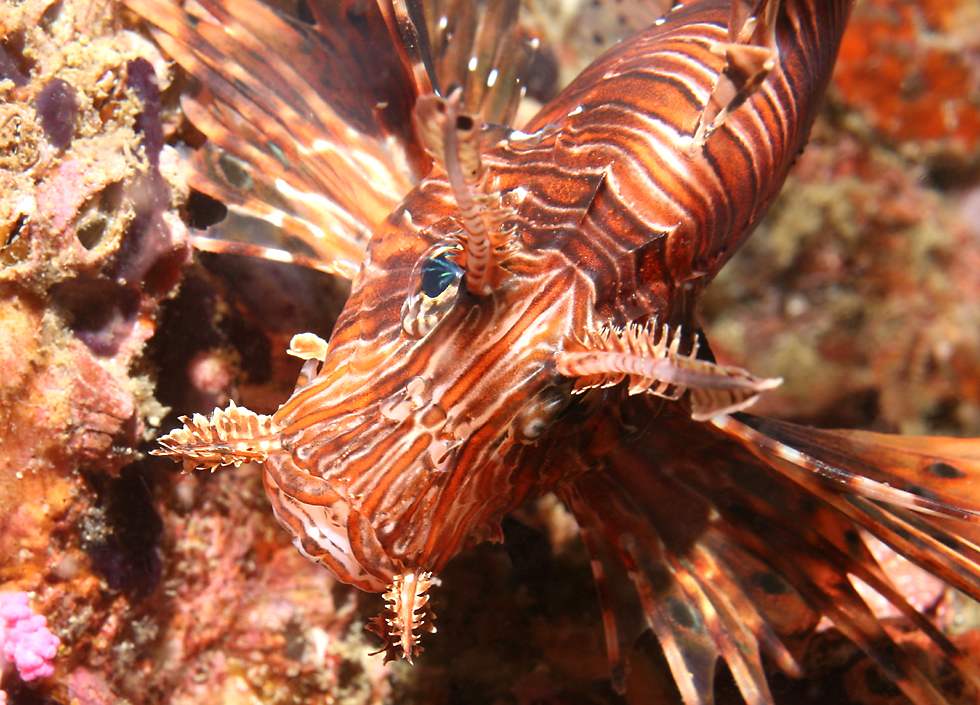
This lionfish is much more feared than the puffers and porcupinefishes, and for good reason - the spines on its back contain a very potent toxin, and you don't have to eat it to get a dose! Lionfish aren't just a menace for divers; I snorkelled with half a dozen of them in shallow water just off the most popular swimming beach in the Egyptian resort town of Dahab. I'm sure that those swimmers were unaware of the danger they were in. On the plus side, lionfish aren't at all aggressive, they're slow moving and would much rather swim away than use their formidable defensive powers. For these reasons, they're really not a huge threat either to divers or to swimming tourists. |
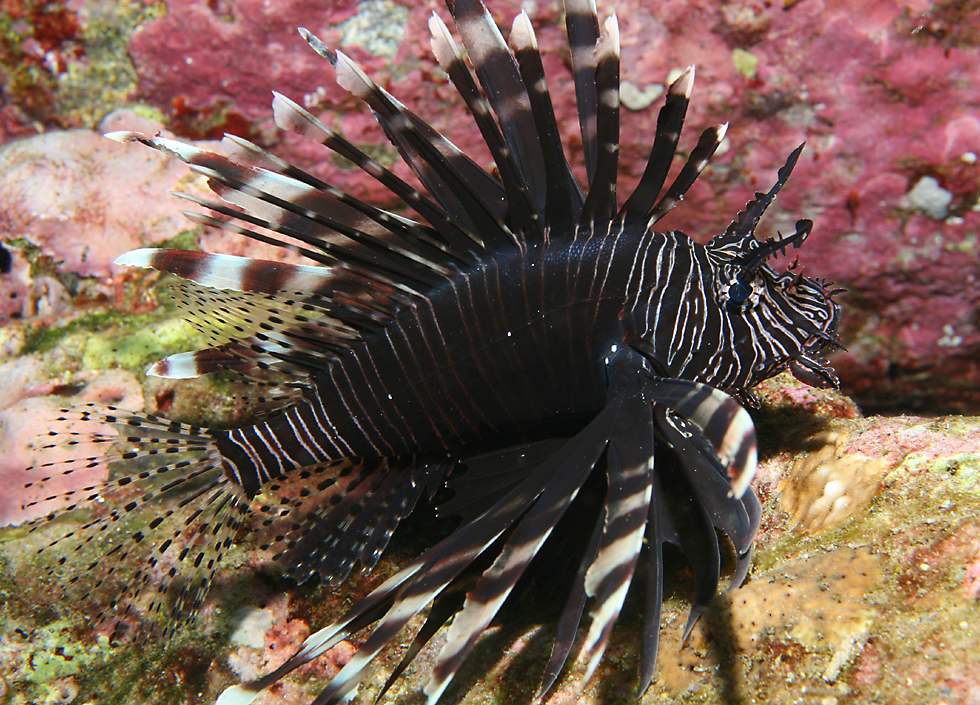
There are about a dozen species of lionfish, most are some combination of red and white stripes, however the dwarf lionfish does have a very nice yellow variation and some common lionfish individuals like this one are black and white. |
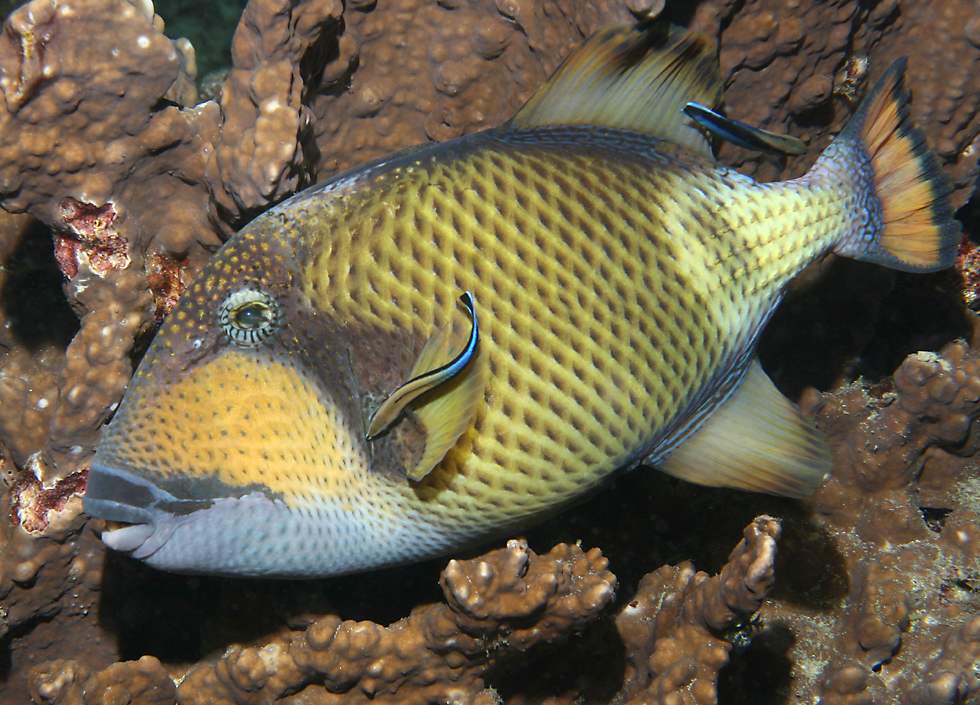
A titan triggerfish takes time out from its busy schedule for a spa treatment with a couple of cleaner wrasses. In this case, the busy schedule mostly consists of sinking its teeth into unwitting scuba divers, making it one of the most feared fish in the ocean, more so even than the lionfishes and scorpionfishes. You can get a better view of those teeth from this photo of a titan triggerfish in the Philippines. However this aggressive behavior is usually confined to those times when the triggerfish is guarding its nest of eggs, and even then facing it down (preferably with the help of some object like a camera housing) almost always keeps it at bay. |
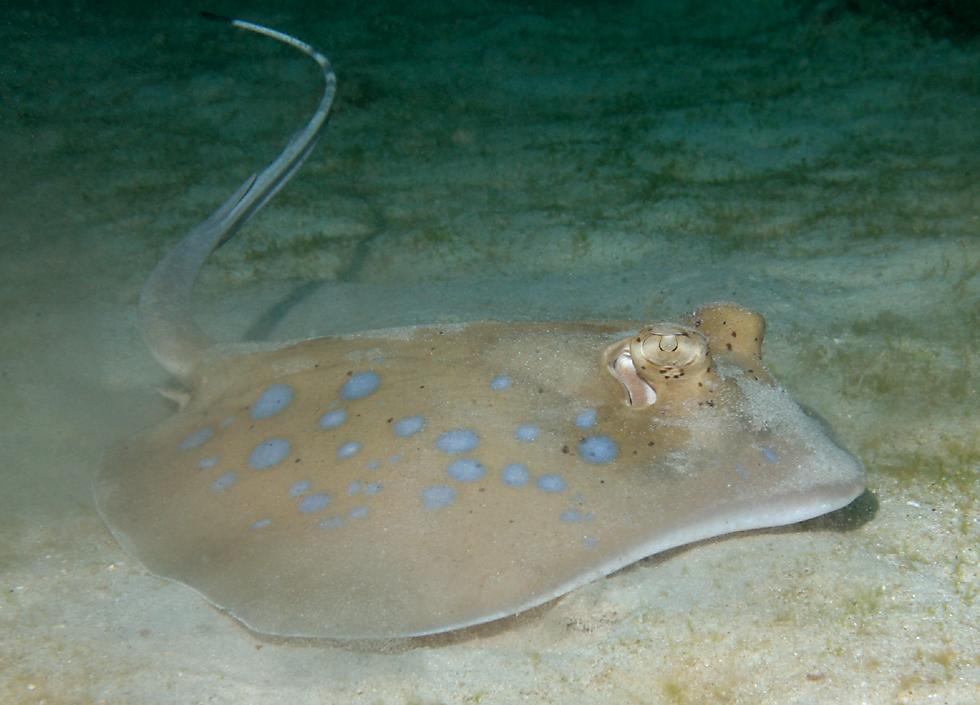
Stingrays like this blue-spotted ray have a fearsome reputation because of the venomous barb on their tail, but they're also totally non-aggressive. Most incidents occur when someone is wading through shallow water and accidentally steps on an unseen ray; for this reason it's advisable to shuffle your feet along the bottom to avoid the problem. Otherwise there are rare situations where the stingray puts its barb into a diver who is deliberately disturbing it. |
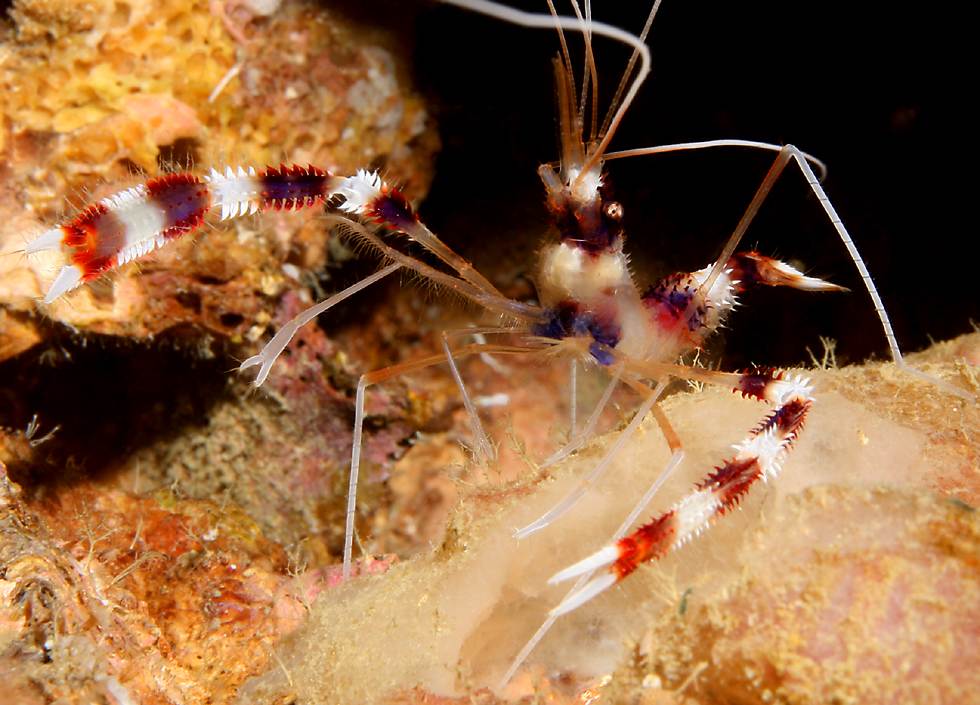
The moray eel and its shrimp friend were at the very small island of Koh Doc Mai, near Phuket, as was this banded boxer shrimp. Although it's called a shrimp, it actually belongs to a different family of crustaceans, but it performs the same cleaning services as the true cleaner shrimps. It's pretty much unconcerned about who it cleans, so if you slowly reach out your hand to it then it's quite likely that it will give you a quick beauty treatment, looking for parasites and bits of dead skin. They are found throughout the tropics, in both the Pacific and the Atlantic, and almost always come in pairs; this one's mate, a smaller male, was just out of shot on the right. |
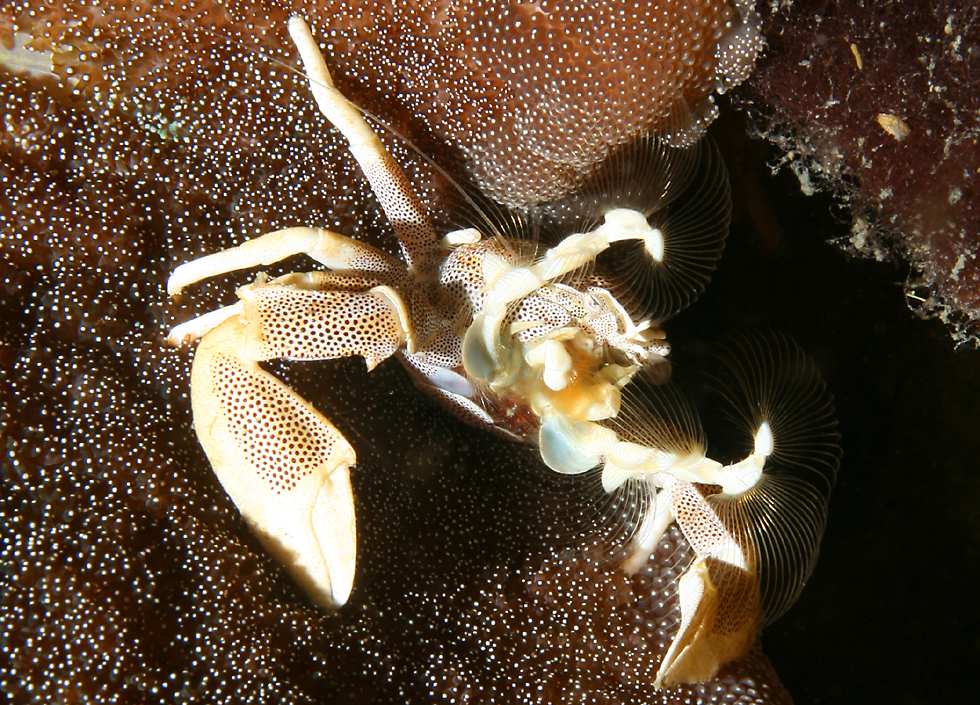
This spotted porcelain crab uses the feathery extensions on its maxillipeds to sweep the water for small crustaceans and other plankton. It's also called a porcelain anemone crab because of its habit of feeding while on an anemone, presumably to benefit from the protection offered by the anemone's stinging cells. In spite of its name and crab-like appearance, this species isn't a true crab, instead it's a type of squat lobster, the giveaways being its antennae and the three pairs of walking legs; true crabs have no antennae and four pairs of walking legs. There are a number of families of crustaceans which have evolved to look like true crabs, a process called carcinisation. |
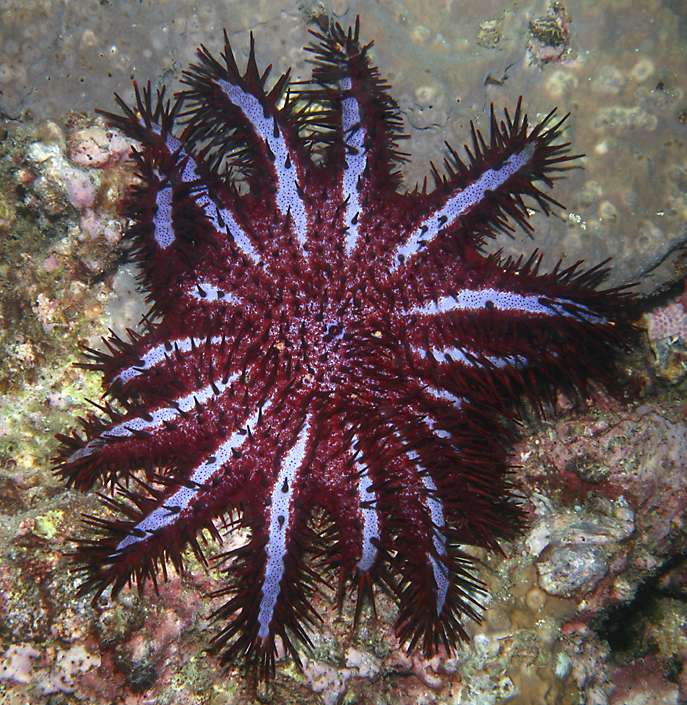
If the last sea star suffered from having too few arms, then this one definitely has a surplus, which has resulted in an arrogant monomania of horrific proportions. This is the much reviled crown of thorns starfish Acanthaster planci, which can strip coral heads bare by turning its stomach inside out and consuming the coral polyps. On their own they're quite bad, but sometimes they reach plague numbers and devastate large areas of reef. Like the other sea stars, this species is highly variable in coloration, I've also seen a dull colored one munching on a Fijian reef, but this vibrant purple and blue color scheme seems to be more common around Thailand. |
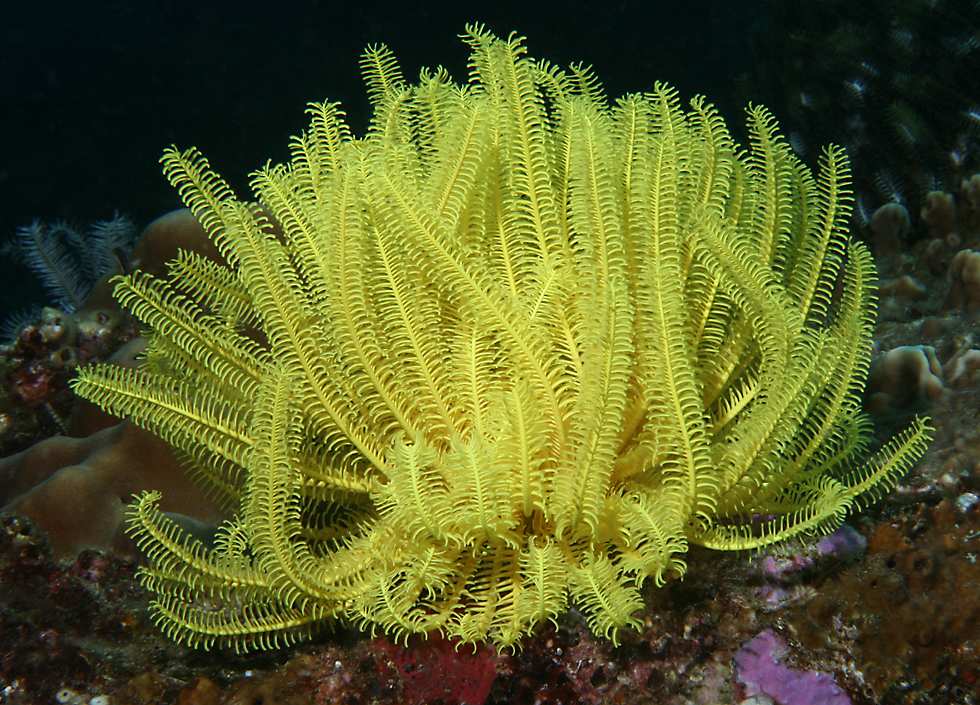
Talking about vibrant colors, here's a very nice crinoid called Comanthina nobilis. It belongs to a class of animals (yes, Virginia, this is an animal and not a plant) which are also called feather stars or sea lilies. The "feather star" name is a hint that crinoids belong to the same large group as the sea stars. Theoretically this means that they have five-fold symmetry, but as you can see they have a lot more than five arms, just as the two sea stars you've just seen don't conform to that "rule". The arms of the crinoid capture food particles from the water and pass them down to the mouth, which is at the top and center of the creature. Crinoids first appeared around 450 billion years ago. Some of the modern species have a stem which anchors them to the rock while others are completely mobile and can even swim. However it appears that even the species with stems can move from place to place if the mood comes over them. |
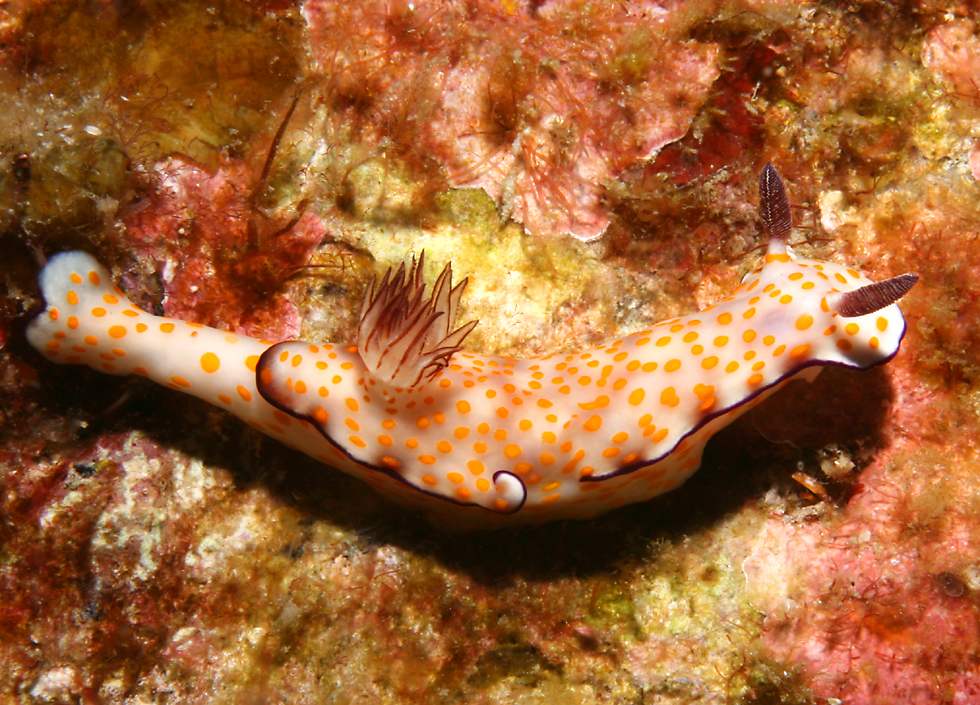
I don't think anyone would ever accuse a sea slug like this Risbecia pulchella of being intelligent, but there's no doubt that it's interesting and beautiful, in fact it's common name is the "beautiful risbecia". It's quite common to find members of this species trailing one after another, perhaps a prelude to mating. |
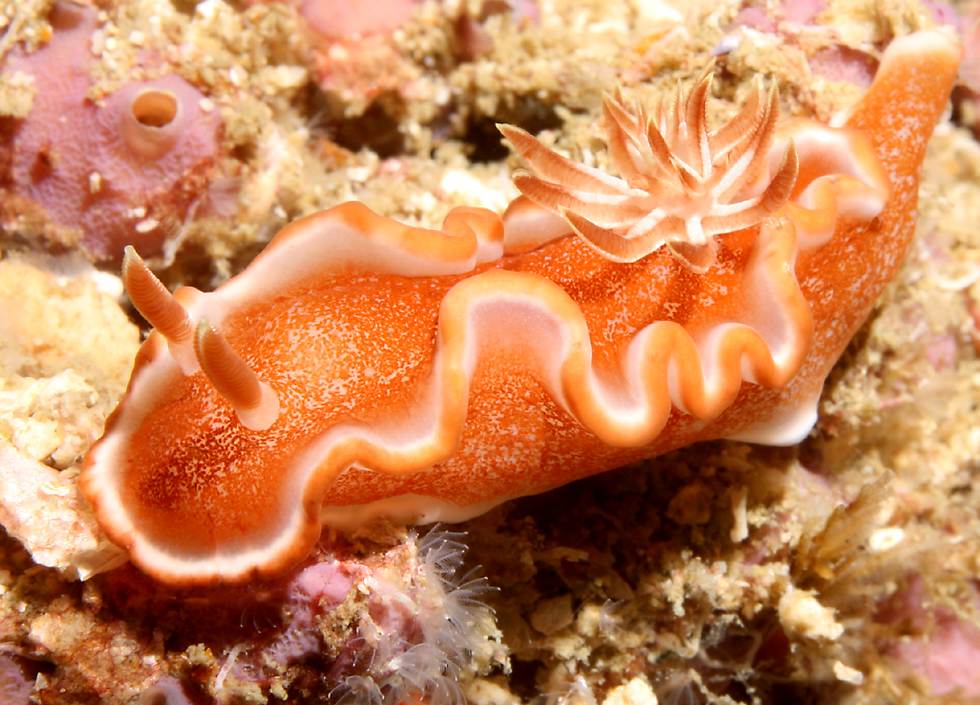
Here's Glossodoris rufomarginata, which is commonly called the white-margined glossodoris; however the Latin "rufus" means red, so I'll stick with the less commonly used name red-margined glossodoris, because it seems more appropriate. Like many other sea slugs it eats sponges - not the chocolate type with frosting, but the clean yourself in the bath type. |
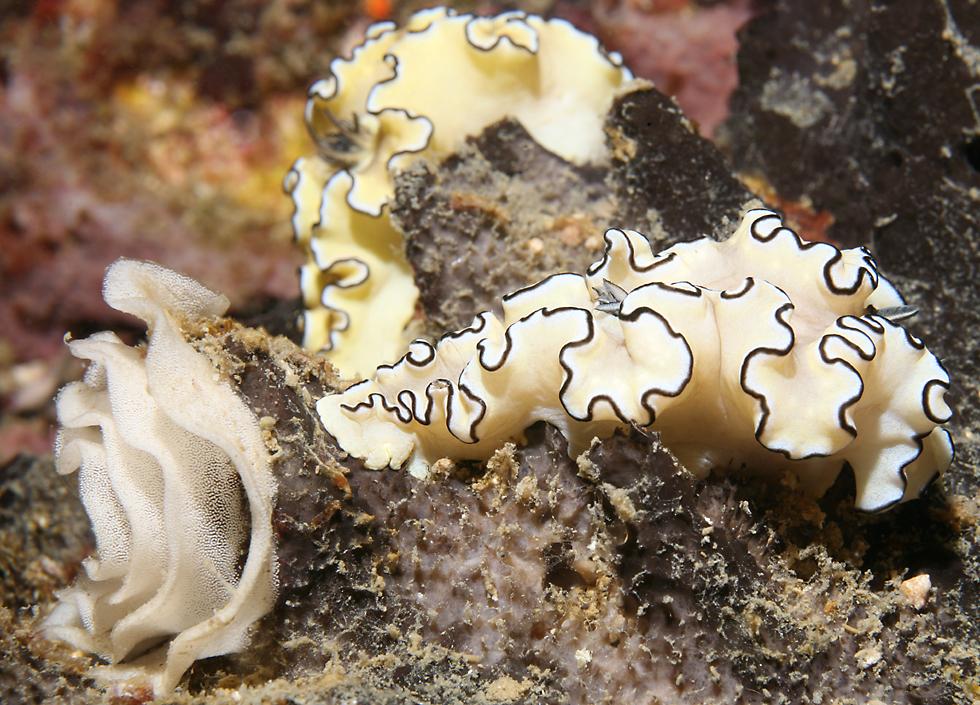
This sea slug with the very frilly edge is Glossodoris atromarginata, the fittingly named black-margined glossodoris, which also eats sponges. Actually there are two black-margined glossodorises in this photo, and the strange white spiral on the left of the photo is a ribbon of sea slug eggs. The eggs laid by this variety of slug certainly have the same shape and color as these, so there's quite a good chance that they were laid by one of these two. Sea slugs are hermaphrodites, each individual is both male and female, so when they mate both pass sperm to the other and then both go off to lay eggs. |
